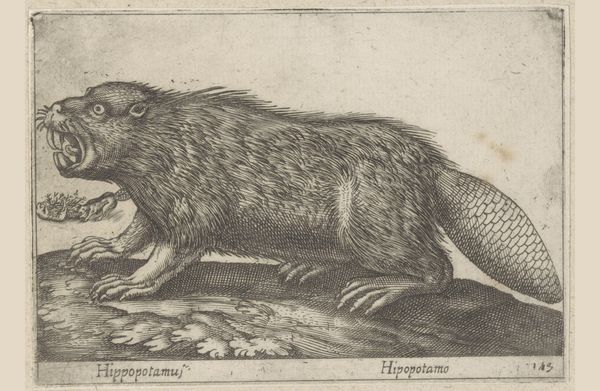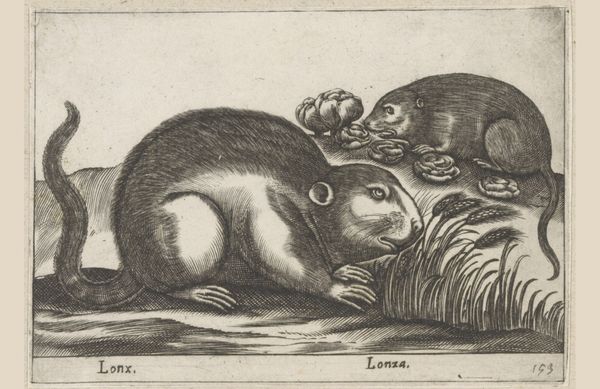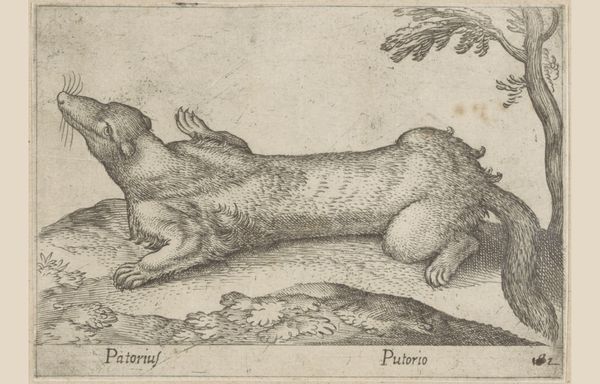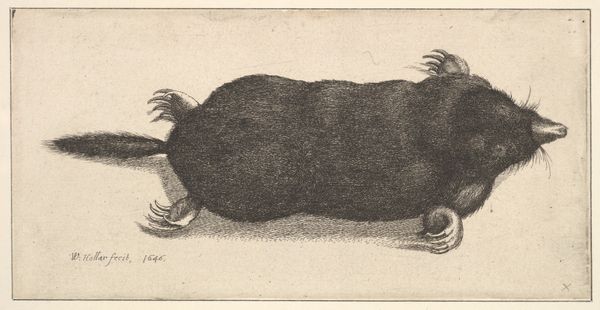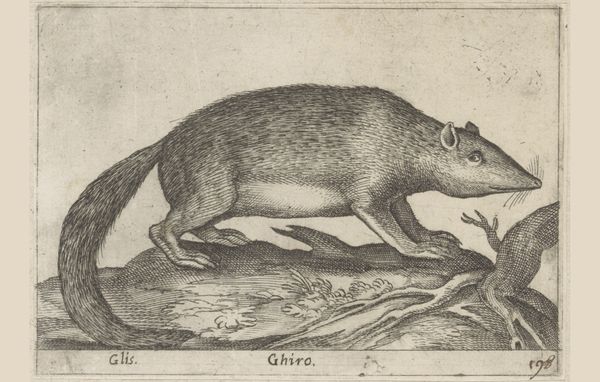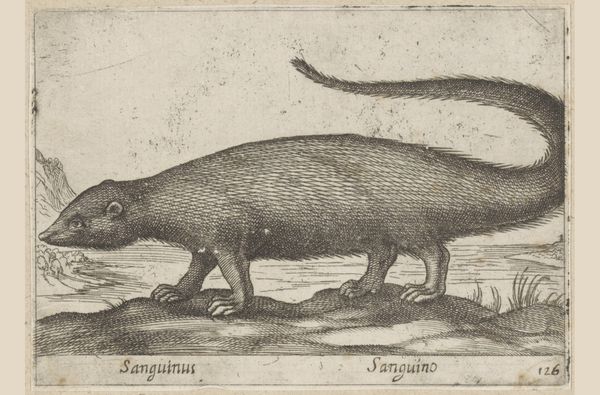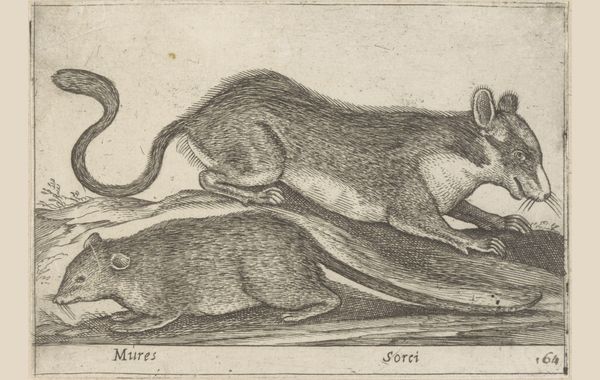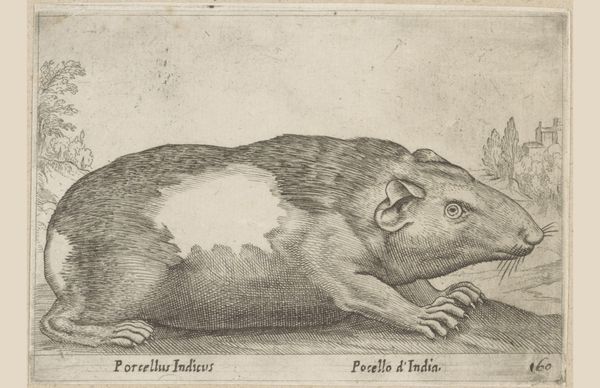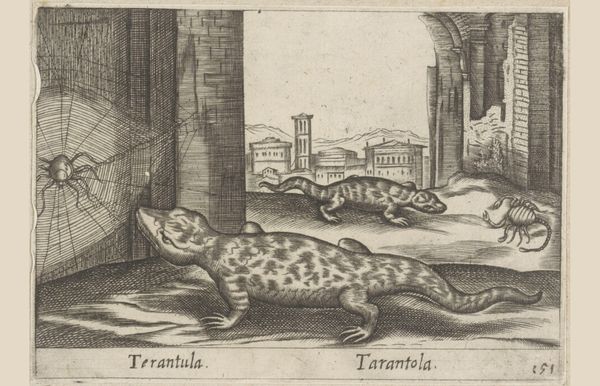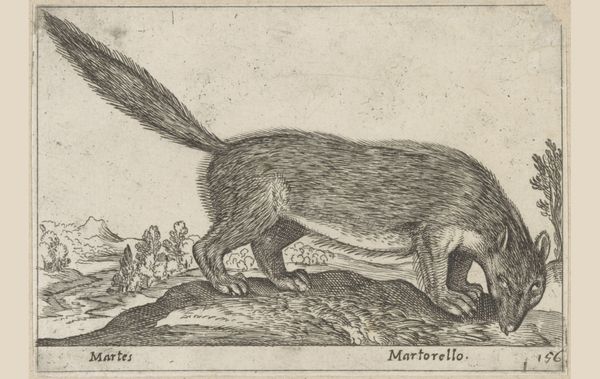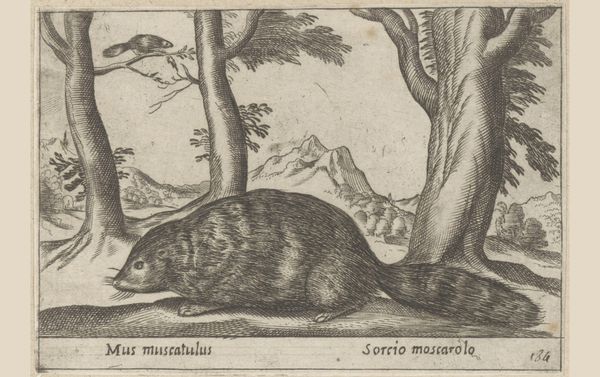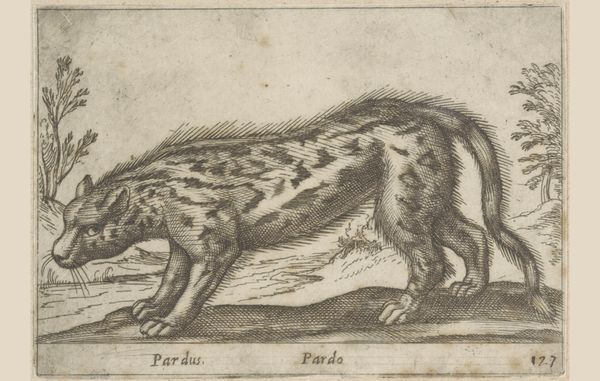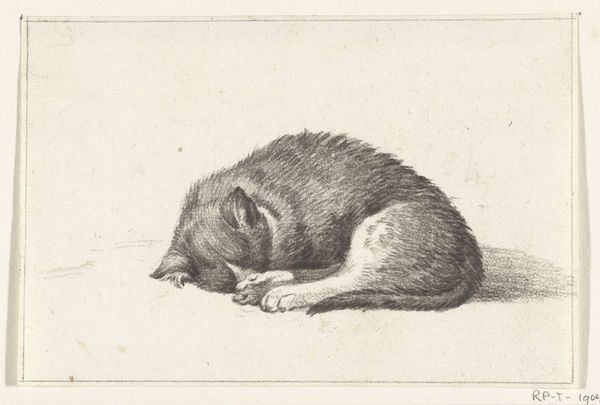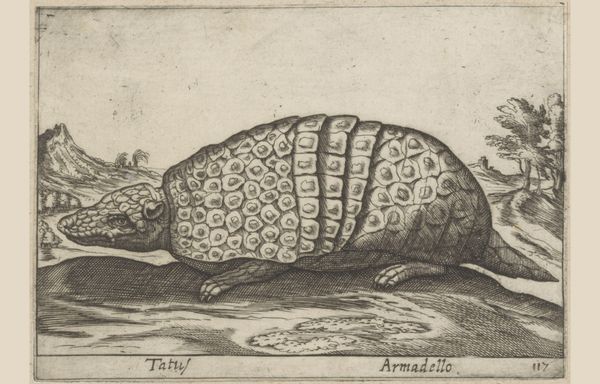
print, engraving
#
medieval
# print
#
figuration
#
line
#
engraving
#
realism
Dimensions: height 95 mm, width 137 mm
Copyright: Rijks Museum: Open Domain
Editor: Here we have Antonio Tempesta's "Mol," a print from before 1650. I'm struck by the realism achieved through the linework of the engraving, capturing the mole's form. The depiction is so tactile. What are your thoughts on this print? Curator: For me, the crucial point of entry here lies in understanding the materials and processes involved in printmaking at that time. Consider the labor invested in creating the plate itself and pulling impressions. Who would consume such an image, and what social role did images of natural history play? It highlights a shift in ways of knowing and consuming the natural world. Do you think there's also an interesting class component to owning an item of reproducible natural knowledge such as this? Editor: Definitely, I see how the accessibility of a print would democratize knowledge, making depictions of the natural world available to a wider audience beyond those who could afford original paintings or travel to see these creatures firsthand. Is it a move away from painting on canvas, toward a world of printed media? Curator: Exactly! Engraving techniques also allowed for incredible detail, catering to a growing scientific curiosity, while also blurring lines between artistic skill, artisanal knowledge, and the early burgeoning of scientific method. Look at the consistency and pressure of the line - do you read them more as documentary or as decorative? What of the text labels, too? Are they about education, possession, or something else? Editor: It seems like a fascinating combination of both. The mole is realistically rendered, but the neat lettering lends an ornamental quality, implying a level of wealth involved. Thanks, it’s very interesting to think of this as both artistic object and material record. Curator: And this tension shapes so much of our understanding of this period’s relation with its materials, doesn't it? The relationship is complex.
Comments
No comments
Be the first to comment and join the conversation on the ultimate creative platform.
